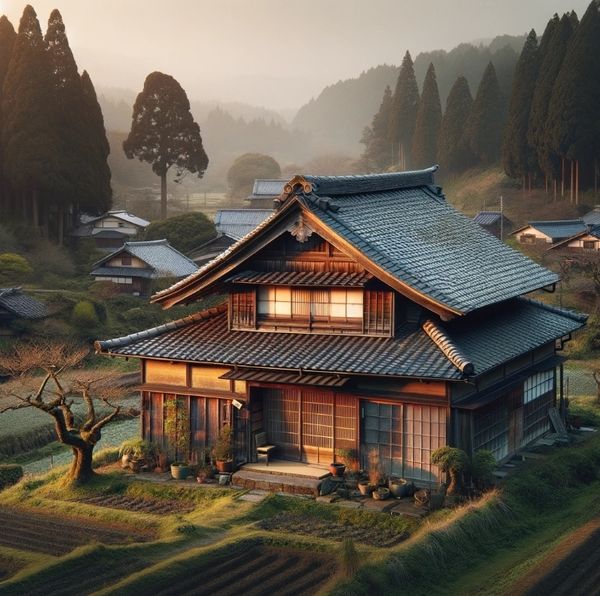Akiya: Uncovering Japan's Abandoned Homes

The phenomenon of 'akiya'—abandoned homes scattered across Japan—has risen to prominence due to various socio-economic and demographic shifts. These empty houses, often found in rural areas, reflect broader trends of urban migration and aging populations. This article explores the multifaceted dimensions of akiya, from legal intricacies and economic impacts to cultural implications and potential as investment opportunities.
Key Takeaways
- Akiya are a growing phenomenon in Japan, driven by demographic changes like aging and urban migration.
- Navigating the acquisition of akiya involves complex legal and bureaucratic challenges.
- These abandoned homes represent both economic burdens and opportunities for revitalization.
- Cultural perceptions and the historical significance of akiya influence community responses and potential reuses.
- Akiya offer unique investment opportunities but come with risks, necessitating careful assessment.
Understanding the Akiya Phenomenon
The Rise of Abandoned Homes in Japan
The phenomenon of akiya, or abandoned homes, has been escalating in Japan, primarily due to the aging population and urban migration. The number of akiya has reached over 9 million, marking a significant opportunity for rural revitalization.
Factors Contributing to the Increase of Akiya
Several factors contribute to the rising number of akiya:
- Aging population leading to higher death rates in rural areas
- Younger generations moving to urban centers for better opportunities
- Preference for new homes over older, existing structures
The Impact on Rural Communities
The surge in akiya has profound effects on rural communities, often leading to:
- Decreased property values
- Increased municipal costs to maintain infrastructure
- Social isolation and decreased community cohesion
This decline not only affects the economic stability of these areas but also the cultural heritage, as traditional practices and community bonds weaken.
Navigating the Legal Landscape of Akiya Ownership
Challenges in Acquiring Akiya
Acquiring an akiya is not as straightforward as it may seem. Foreigners can buy akiya just like any real estate in Japan, but the process involves various challenges. These include understanding the local property laws, dealing with language barriers, and the necessity of being physically present to inspect properties.
Legal Requirements and Procedures
To legally acquire an akiya, one must navigate through a series of bureaucratic procedures. This often involves:
- Checking the property's legal status
- Ensuring there are no outstanding taxes
- Complying with local building codes and regulations
Potential Legal Pitfalls
Investors should be wary of potential legal pitfalls associated with akiya properties. These might include undisclosed debts, property disputes, and the risk of overpaying due to competitive bidding at auctions. > Caution is advised when dealing with properties that require the owner to reside permanently or engage in farming.
Economic Implications of Akiya
Financial Burdens of Abandoned Properties
Abandoned homes, or akiya, not only represent a loss in property value but also impose significant financial burdens on local governments and communities. The maintenance of these properties, including basic upkeep and security, requires funds that could otherwise be allocated to community development or other public services. Additionally, the presence of akiya tends to decrease the value of surrounding properties, further straining local economies.
Economic Opportunities in Revitalizing Akiya
Revitalizing akiya presents unique economic opportunities for both individuals and communities. Akiya banks facilitate property sales through auctions, often at favorable prices, which can attract investors and new residents. This influx of new homeowners can help stabilize and even rejuvenate local economies by increasing demand for local services and businesses.
- Potential increase in local business activities
- Creation of jobs through renovation projects
- Enhanced property values with successful revitalizations
Government Initiatives and Incentives
The government has launched several initiatives aimed at addressing the akiya issue, including financial incentives for those willing to move to rural areas and invest in these properties. For example, a lump sum of $500 and tax breaks are offered to encourage urban dwellers to relocate. However, the effectiveness of these measures has been mixed, with many remaining skeptical about the overall value of such deals.
Despite these efforts, the challenge of making akiya habitable and attractive remains significant, requiring substantial investment in renovations and infrastructure improvements.
Cultural and Social Aspects of Akiya
Historical Significance of Abandoned Homes
Many of the Akiya homes are traditional Japanese homes, which hold significant cultural value due to their architectural style. These homes offer a glimpse into the past, preserving the traditional ways of living that are rapidly being replaced by modern developments. The preservation of these homes is crucial for maintaining the cultural heritage of Japan.
Social Stigma and Community Perspectives
In many rural communities, there is a social stigma associated with living in or near Akiya. This stigma often stems from the association of Akiya with neglect and decay, which can deter people from investing in or revitalizing these properties. However, changing this perception is key to addressing the Akiya issue.
Cultural Shifts and Akiya
The increasing number of Akiya in rural areas is indicative of broader cultural shifts within Japan. Younger generations are moving to urban centers in search of better opportunities, leaving behind their ancestral homes. This migration has profound implications for the cultural landscape of rural Japan, as it leads to the gradual erosion of community bonds and traditional lifestyles.
Akiya as an Investment Opportunity
Assessing the Viability of Investing in Akiya
While the allure of acquiring property at a significantly reduced cost is tempting, investors should conduct a thorough assessment of potential Akiya properties. Key considerations include the location, structural integrity, and the cost of necessary renovations. It's crucial to understand that not all akiya are bargains once these factors are accounted for.
Success Stories of Akiya Investments
Investors have transformed some akiya into profitable ventures, revitalizing properties and even entire neighborhoods. These success stories often involve turning these properties into guesthouses, boutique hotels, or rental units, providing a steady income stream and boosting local economies.
Risks and Rewards of Akiya Real Estate
Investing in akiya comes with its set of challenges and opportunities. The potential for high returns exists, but so do significant risks, such as unforeseen renovation costs and difficulties in reselling the property. Prospective investors should weigh these factors carefully before proceeding.
The Future of Akiya in Japan
Predictions and Trends
Abandoned homes will be a big part of Japan's future, with a growing number of akiya due to demographic shifts and urban migration. The trend suggests an increase in akiya, especially in rural areas, as the population continues to age and decline.
Potential Solutions to the Akiya Crisis
To address the akiya crisis, several strategies could be implemented:
- Incentivizing young families and foreigners to move into these homes.
- Implementing more robust akiya banks to facilitate easier transactions.
- Developing community-led projects to revitalize these areas.
Role of Technology in Managing Akiya
Technology can play a crucial role in managing akiya by:
- Streamlining the process of buying a house in Japan.
- Providing detailed databases of available properties.
- Offering virtual tours to potential buyers.
Embracing technology could significantly reduce the barriers to akiya acquisition and maintenance.
Tourism and Akiya: A New Frontier
Transforming Akiya into Tourist Attractions
The concept of converting abandoned homes into tourist attractions is not only innovative but also economically promising. Tourism can breathe new life into these neglected spaces, offering a unique experience that blends history with modern hospitality. Examples include themed hotels, historical tours, and cultural centers.
Case Studies of Successful Transformations
Several regions have successfully transformed akiyas into vibrant tourist spots. Key examples include:
- Renovated traditional homes in rural villages
- Art installations within abandoned structures
- Eco-friendly retreats in scenic locations
These transformations not only revive the local economy but also preserve the cultural heritage.
Challenges in Promoting Akiya Tourism
Promoting tourism in areas previously known for abandonment poses significant challenges. These include infrastructural development, marketing to the right audience, and overcoming the stigma of abandonment. Strategic planning and community involvement are crucial in overcoming these hurdles.
One of the key hurdles is the lack of essential services and amenities which can deter tourists. For areas that have seen significant depopulation, services such as public transportation, dining, and accommodation options are often minimal or completely absent. Investing in infrastructure is therefore essential, but it requires substantial financial resources and commitment from local governments and investors.
Conclusion
In conclusion, the phenomenon of akiya, or abandoned homes in Japan, presents a unique facet of the country's housing market and rural landscape. These homes, often left vacant due to demographic shifts and economic changes, offer potential opportunities for those willing to navigate the complexities of acquisition and renovation. While they come with their challenges, including legal hurdles and potential hidden costs, akiya also represent a chance to revitalize and repurpose properties that are part of Japan's cultural and architectural heritage. For adventurous souls, they could be the doorway to a new lifestyle or a rewarding investment in the heart of rural Japan.
Frequently Asked Questions
What is an Akiya?
An Akiya refers to an abandoned house in Japan, often found in rural areas due to demographic shifts, such as urban migration and aging populations.
Why are there so many Akiya in Japan?
The rise in Akiya is primarily due to Japan's aging population, urban migration, and the reluctance of heirs to take over rural properties, leading to a surplus of unoccupied homes.
Can foreigners buy Akiya?
Yes, foreigners can buy Akiya, but they must navigate complex legal requirements, including property registration and potential renovation obligations.
Are there any financial incentives for buying Akiya?
The Japanese government and some local municipalities offer incentives such as subsidies and tax reductions to encourage the revitalization of Akiya properties.
What are the potential risks of investing in Akiya?
Investing in Akiya can involve risks such as outdated property deeds, hidden maintenance costs, and challenges in integrating into rural communities.
How are Akiya being transformed for tourism?
Some Akiya are being converted into tourist attractions, guesthouses, or cultural centers as a way to boost local economies and preserve historical value.



